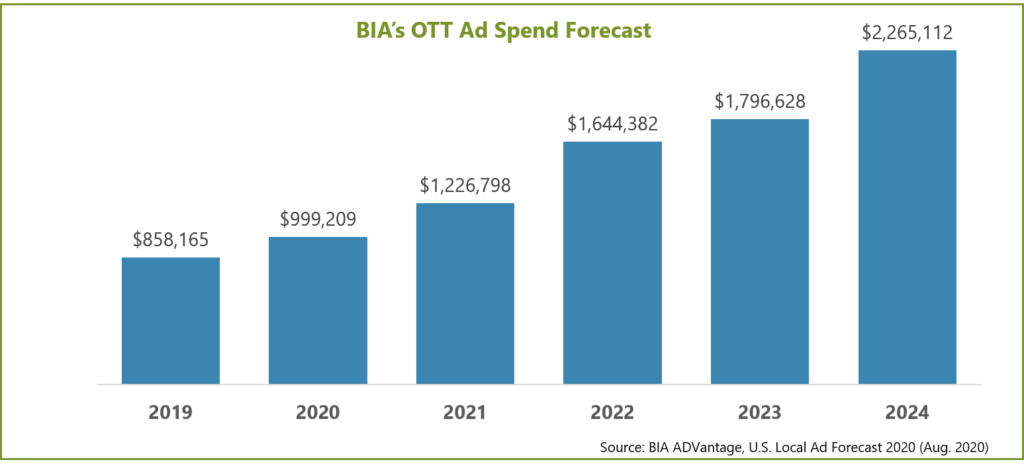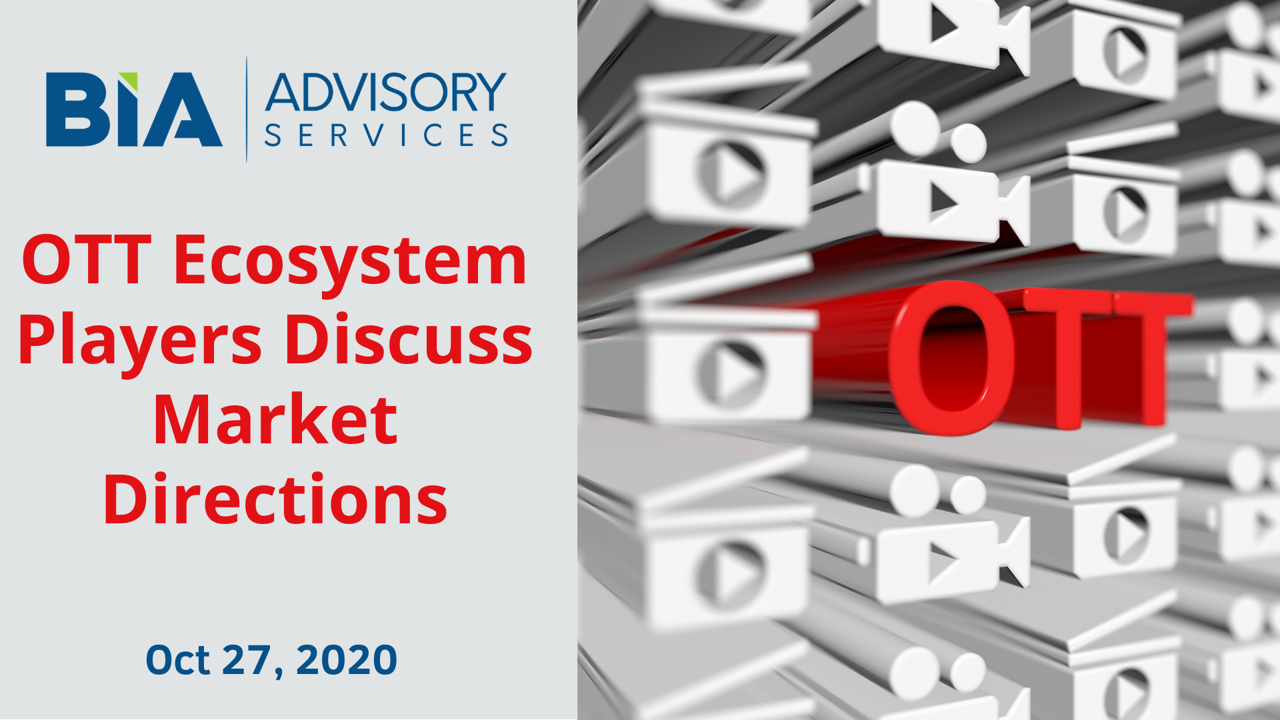
BIA convened an expert panel of OTT industry thought leaders who shared their insights, recommendations, frustrations and excitement about Connected TV. The session was moderated by Mitch Oscar, BIA advisor and Advanced TV Strategist for USIM. The webinar is available to view on-demand.
BIA’s managing director, Rick Ducey, kicked off the session to share highlights of BIA’s OTT local ad spending forecast. BIA’s currently estimates the OTT ad market targeting local viewers will rise from about $860 million in 2019 to $2.3 billion by 2024. As more viewers working from home subscribe to and view more OTT services, the local OTT market is accelerating quite dramatically.

Major discussion topics included OTT for reach extension, audience measurement and reporting, addressability, who at agencies is the OTT buyer, and cross-platform planning and attribution.
Samsung’s Justin Evans shared that in Q3 2020, 25 percent of Samsung SmartTVs were used only for streaming, no linear TV viewing at all. Evans argued that, “OTT is not just an extension medium, it is a primary medium and it is urgent to reach that portion of the audience that only streams.”
Adam Gaynor from Vizio spoke to the importance of the “glass level” data from ACR (automated content recognition) systems, “ACR tells us what content is on displayed on the TV set regardless of whether it is linear, AVOD, or SVOD. ACR data provides new insights into the OTT audience.”
Sinclair’s Brian Hunt noted that media sellers still have to be flexible in selling to agencies, “Sometimes it’s the TV group, other times the digital group and sometimes both that are the buyers.” He continued, “There’s definitely an increase in demand for OTT at the local level where we’re seeing OTT appear in a growing number of RFPs coming from agencies.” Gaynor added, “Some of the large holding companies want to plan with a single budget going forward, across all channels linear and digital. They want to see the outcomes so they can tie this knowledge back to the next plan.”
Jo Kinsella from TVSquared pointed to the criticality of attribution and using deterministic data to show cross-platform performance. “Advertisers need to know where to put their dollars. We can now prove deterministically what works in TV.”
Comscore’s Chris Wilson agreed that attribution is critical and noted that an implication of this could change how agencies base their billing, “We need to move to performance-based pricing for agency fees, not how many people are on the account. But we do need to pay attention to the quality of the data, that’s very important.”
The panel also spoke to addressable TV and the upcoming rollout of Project OAR, now set for a live campaign execution before the end of the year. Project OAR’s goal is to allow the linear networks to add addressability to their inventory.
You can download the webinar slide deck here and click here to view webinar on-demand.

